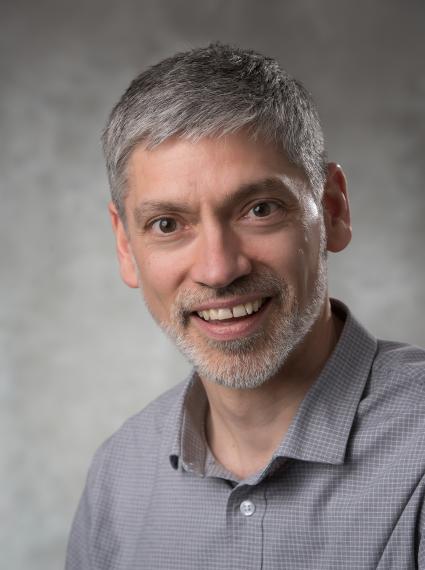Allan Willms

Find Related People by Keyword
Education and Employment Background
Dr. Allan Willms received his PhD from Cornell University in 1997. In 1997, he worked as a Visiting Scientist at Cornell University, and between 1998 and 2003, he was a Lecturer at the University of Canterbury in Christchurch New Zealand. Willms joined the Department of Mathematics and Statistics at the University of Guelph in 2003 where he is now a Professor.
Research Themes
Willms’s research is centered around dynamical systems models of biological or other processes. It is weighted toward the applied end of the mathematics spectrum, often concerned with implementation details and issues of making the mathematics accessible to biologists and engineers. Key areas of recent focus include:
- Simple models of climate change. Climate models range from simple equilibrium balance models, to large and complex general circulation models. Each has their place in informing us of the drivers in climate change and expected outcomes. We focus on smaller models that capture the primary features with substantial accuracy yet allow for analysis of cause and effect. We have applied these models to paleoclimate transitions as well as the present day using carbon dioxide level predicted by the International Panel on Climate Change. Our models predict an irreversible bifurcation in the Arctic from the present cold climate to a warm temperate one if CO2 emissions are not reduced.
- Parameter range reduction for ODE models. Willms and his graduate students have introduced a novel method of parameter estimation for ODE models. The process involves discretizing the ODE with certain linear multi-step formulas and then using the data and these formulas to remove regions of parameter space that are inconsistent. The result is a collection of boxes in parameter space wherein the optimal solution must lie. The method is a fast and efficient means of obtaining a good starting parameter estimate for traditional point-based estimation schemes.
-
Bifurcation with symmetry. Together with William Langford and Petko Kitanov, Willms studies the effects of symmetry, particularly the symmetry of identical oscillators, on the normal forms of bifurcations in such systems. This has been applied to the question of symmetry first observed by Christiaan Huygens.
-
Mathematical Biology. Willms has done mathematical modelling of a wide range of biological processes including neuronal ion channels, horizontal gene transfer, fish population dynamics, hepatitis transmission, influenza in swine farms, Cheyne-Stokes respiration, E. coli contamination in ground beef, cytokine storms, and expandable fluid volume in cats.
Highlights
We have completely analyzed, using bifurcation theory, the advent of oscillations in systems of two identical clocks. This work explains why Christiaan Huygens noted only anti-phase synchrony in his famous observations in 1665, and indicates how the physical setup must be altered in order to observe in-phase, mixed mode, or other more exotic behaviours. Allan R. Willms, Petko M. Kitanov, William F. Langford, 2017. Huygens' Clocks Revisted, R. Soc. Open Sci. 4 (170777), doi=10.1098/rsos.170777.
Paleoclimate history shows the presence of rapid climate changes, for example the Pliocene paradox, when the Arctic changed from a warm temperate climate to a cold climate that has continued to the present, despite very little change in the forcing factors. By incorporating water vapor feedback, ice albedo feedback, and carbon dioxide levels in a simple energy balance model we were able to postulate an explanation for the Pliocene paradox: The system was in one of two stable equilibria but slow change in the system parameters caused a saddle-node bifurcation resulting in the disappearance of the warm equilibrium and driving the system rapidly to the cold one. Brady Dortmans, William F. Langford, Allan R. Willms, 2019. An Energy Balance Model for Paleoclimate Transitions, Climate of the Past 15 (2), pp. 493-520, doi=10.5194/cp-15-493-2019.
- Natural Sciences and Engineering Research Council of Canada (NSERC) Discovery grant, 2004, 2010, 2015, 2020
- Editor, Biosystems, 2014-present
- Editor, International Journal of Applied Nonlinear Science, 2012-2016
Media Coverage
- NPG Paper of the Month: Anthropocene Climate Bifurcation
- DSWeb Magazine: Breathing Torus Near Double Hopf Bifurcation
Recent Studnet Projects/Theses
- A Julia Tool for Analysis of Discrete-Time Planar Systems, Wijerathna, H.S.I., M.Sc. (2025)
- Modelling Arctic Climate Response to Permafrost Melt, Chaity, Tonima, M.Sc. (2025)
- Parameter Estimation of the Potassium Channel in the Hodgkin-Huxley Model, Pengfei (Maxwell) Yue, M.Sc. (2024)
- OPTIMUS PEAK: Automatic Extraction of Peak Information of Multi-Dimensional Solution and Solid-State NMR Spectra, Rachel Brown, Ph.D. Bioinformatics (2023)
- The Adaptive Memory Feature and The Lamplighter Puzzle, Connor Gregor, Ph.D. (2021)
- Modelling the COVID-19 Pandemic Using SIR Models with Bifurcation, Himmat Kooner, M.Sc. (2021)
Recent Publications
- Sarah Abel, Xiu Ting Yiew, Shane Bateman, Allan R. Willms, 2024. A Pressure-Based Model of IV Fluid Kinetics, Bulletin of Mathematical Biology, 86, 133.
- Allan R. Willms, 2024. Resonantly Forced ODEs and Repeated Roots, SIAM Review, 64 (1), pp. 149-160. doi=10.1137/23M1545148.
- Kolja L. Kypke, William F. Langford, Gregory M. Lewis, Allan R. Willms, 2022. Climate Bifurcations in a Schwarzschild Equation Model of the Arctic Atmosphere, Nonlinear Processes in Geophysics, 29, pp. 219-239, doi=10.5194/npg-29-219-2022.
- Chien Hsien Kitty Yang, Shane W. Bateman, Xiu Ting Yiew, Allan R. Willms, 2022. Validation of 3-dimensional mathematical computation of feline bladder volume using ultrasonographic orthogonal bladder images, Canadian Journal of Veterinary Research, 86(3), pp. 200-217.
- Connor Gregor, Daniel Ashlock, Allan R. Willms, 2021. The Algebraic Solvability of the Novel Lamplighter Puzzle, ICGA Journal, 43, pp. 203-225, doi=10.3233/ICG-210195.
- Allan R. Willms, 2021. Uniform Sampling on the Standard Simplex, Missouri Journal of Mathematical Sciences, 33 (1), pp. 119-124.